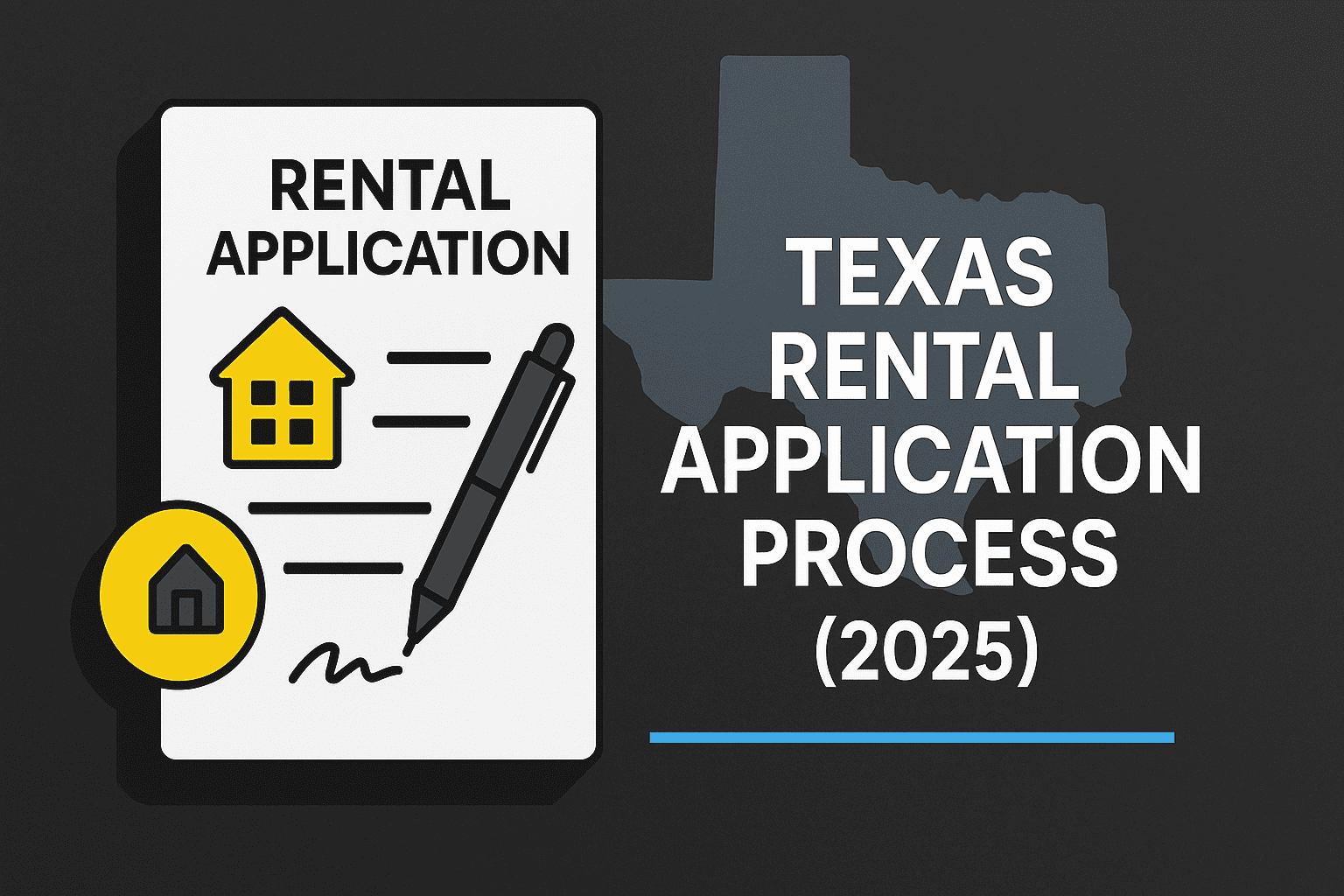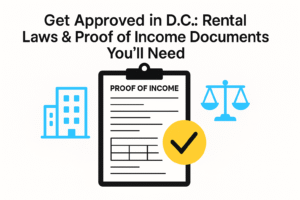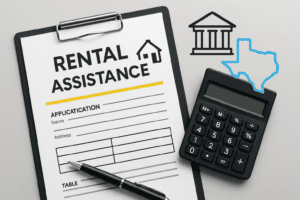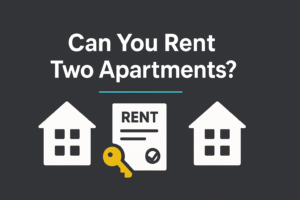Last updated: September 2025
The Texas rental application process still follows familiar steps—fees, screening, income verification, and disclosures—but 2025 brings sharper scrutiny of “junk” fees and screening accuracy. This guide explains what Texas law requires, how to assemble a clean, reviewer‑friendly packet, and when professional formatting helps without crossing legal lines.
We help renters and self‑employed applicants organize and format financial documents for clarity and compliance. Our role is editorial: we improve legibility, packaging, and privacy. We never fabricate numbers, rewrite identities, or alter facts.
This article is practical, not legal advice. Always follow the instructions on the application you’re submitting, and ask the housing provider what they prefer when options exist. Doing so reduces back‑and‑forth and speeds decisions.
Related Entities & Terms
- Proof of income (pay stubs, W-2, 1099-NEC, employer letter)
- Bank statements (all pages, deposits highlighted)
- Tax forms: W-2 (US), 1099 (US), T4 (CA), Notice of Assessment/NOA (CA)
- Credit & background screening (tenant reports)
- Regulators: CFPB, FTC, HUD (US); FCA & GOV.UK (UK); FCAC & CRA (Canada)
- Texas Property Code Ch. 92 (Residential Tenancies)
- Selection criteria disclosure; application fee vs. application deposit
- Redaction & privacy (PII minimization)
- Income consistency (pay frequency, overtime, tips, platform payouts)
What are the legal basics of Texas rental applications in 2025?
Summary: Texas law distinguishes application fees (generally nonrefundable) from application deposits (refundable if you’re rejected). Landlords must disclose written selection criteria when you receive the application; if they do not and you’re rejected, the fee and any deposit must be refunded. A statutory timeline governs when you’re deemed accepted or rejected.
Key terms. Texas defines an “application fee” as a nonrefundable sum to offset screening costs and an “application deposit” as money that’s refundable if you’re rejected. Knowing which you paid matters for receipts, refund rights, and dispute letters.
Required disclosures. When you’re provided a rental application, the landlord must make available a printed notice of the selection criteria and grounds for denial (criminal history, rental history, current income, credit history, or failure to provide accurate/complete information). If the landlord rejects you and didn’t make this notice available, the application fee and any application deposit must be returned.
Decision timing. If a landlord doesn’t give notice of acceptance by the seventh day after you submit a completed application (or after accepting your application deposit when no form was furnished), you’re deemed rejected. Time‑stamping your submission, saving the listing, and keeping email receipts help if you later request a refund.
Refund logistics. Statute outlines how acceptance notices and refunds should be delivered, including mailing requirements if you’ve requested mail. Save envelopes or tracking numbers because proof of mailing dates can matter.
Bad‑faith penalties. A landlord who in bad faith fails to refund an application deposit may be liable for statutory damages (a fixed amount plus multiples of the deposit) and attorney’s fees. This is why precise receipts and clear labeling of “fee” versus “deposit” protect both sides.
2025 transparency trend. National regulators and Texas lawmakers are targeting hidden add‑on fees. The FTC’s 2025 action against Greystar alleges deceptive rent pricing via mandatory undisclosed fees; in Texas, HB 4305 and HB 2905 (introduced 2025) focus on fee disclosure and regulating application fees. Ask for an itemized fee schedule before you apply and keep a copy with your packet.
Mini‑scenario. You submit a completed application on Monday, pay a $50 application fee and a $200 application deposit, and never receive selection criteria. By Tuesday the following week, you still have no acceptance notice. Under the timeline, you’re deemed rejected, and—because criteria weren’t made available—the fee and deposit should be refunded. Send a polite, dated request that references those documents.
Practical note. Even when you qualify, some properties process many applications at once. If you’re denied due to “first approved” policies rather than screening, ask whether the denial falls under the selection criteria notice rule to clarify refunds.

Which edits are allowed on financial documents?
Summary: Edits that improve clarity, privacy, or accessibility—without changing facts—are generally acceptable. Think redacting account numbers, merging pages, adding bookmarks, or exporting clean PDFs. We specialize in these compliance‑safe edits and packaging workflows to help reviewers verify faster.
What privacy redactions are okay?
Redacting part of an account number, masking a routing number, or hiding a home address on a statement is typically fine if the reviewer still sees what they need (names, dates, and line items). Always use true redaction tools that remove underlying text, not translucent boxes that leave data selectable beneath. Our redaction guide walks through best practices step‑by‑step.
Good pattern: show full name, bank logo, statement period, and transaction details; truncate only nonessential digits (e.g., XXXX‑1234). Bad pattern: obscuring balances, payee names, or dates that the reviewer needs to reconcile deposits.
How can I improve legibility and structure?
Combine related pages into a single, bookmarked PDF; add page labels like “Pay Stub 1 of 3”; and highlight matching payroll deposits on the bank statement so reviewers connect dots quickly. Avoid heavy markup that looks like editing; use subtle callouts or yellow highlights sparingly. See our tips on cross‑checking pay stubs and bank deposits.
- File names: “2025‑07_BankStatement_AllPages.pdf” is clearer than “scan123.pdf.”
- Image quality: export to PDF when possible; if scanning, use good lighting and flat pages.
- Annotations: limit to light highlights and bookmarks; avoid text boxes covering numbers.
Are export or OCR fixes allowed?
Yes—clean exports from payroll portals, OCR to make PDFs searchable, and re‑saving to remove corrupted layers are classic “allowed” edits. These steps make your file accessible to leasing systems and reduce questions. Our legal primer stresses the difference between formatting and falsification.
Pro tip: if your employer portal prints watermarks or “copy” labels, leave them in place. Removing them changes the document and may raise concerns. When in doubt, include the original download alongside your cleaned, bookmarked version.
What edits are illegal and what are the risks?
Summary: Changing amounts, dates, counterparties, or balances is a fraud risk. Lenders, landlords, and banks cross‑check data across systems and detect anomalies using both software and manual verification. Consequences range from application denial to civil or criminal exposure under consumer‑protection and fraud statutes.
Falsification examples. Editing payroll amounts, moving direct‑deposit dates to fit a ratio, or swapping employer names is fraud. Reviewers validate data against bank core systems, payroll provider exports, and screening vendors. Our legal explainer details why these changes fail checks.
How fraud gets caught. Underwriters compare net pay on stubs to deposit amounts, look for missing pages, and check whether bank PDFs have been edited. Inconsistent fonts, missing barcodes, and non‑matching transaction IDs are common flags. Phone verification or automated employer databases can also surface mismatches instantly.
Fee transparency enforcement. Regulators have escalated cases on undisclosed fees in rental markets (e.g., the FTC’s action against Greystar). Expect more standardized fee disclosures and stronger remedies when prices aren’t clear.
Screening accuracy rights. The CFPB highlights error‑prone tenant screening reports and provides steps to dispute inaccuracies and review your file. If a report causes an unfair denial, use these rights to correct the record.
- Potential consequences: denial of tenancy; loss of application deposit; civil liability; referral to law enforcement; and future screening notes indicating attempted falsification.
- Knock‑on effects: a flagged file can affect co‑applicants and may trigger higher scrutiny on future applications.
Micro‑scenario. A stub shows $2,150 net every other Friday, but bank deposits arrive on Saturdays and vary by $100–$200. That difference may be legitimate (benefits, garnishments, split deposits), yet “editing” the numbers to match will almost certainly be detected. Provide an HR letter or brief explanation instead.
When do you need professional document formatting?
Summary: Use professional formatting when your packet is complex, time‑sensitive, or involves multiple income sources. We package W‑2 employee files, self‑employed bundles, and mixed‑income situations so leasing staff can verify quickly—without oversharing sensitive data.
How should a W-2 employee renter package documents?
- 2–3 recent pay stubs; most recent W‑2 if requested
- 2 months of full bank statements (all pages)
- Employer letter if pay varies or you’re newly hired
- Single bookmarked PDF (“Pay Stub 1,” “Bank—May,” etc.)
Provide a short cover note if your start date is recent, your first deposit was prorated, or you use split direct deposits. Clear explanations prevent avoidable follow‑ups. See our deep dive on Pay Stub vs. W‑2 for when to submit both.
What about freelancers and self-employed Texans?
Combine recent invoices or payout statements, year‑to‑date profit snapshots, and bank statements showing matching deposits. If income is seasonal, include a brief note that ties last year’s totals to this year’s trendline. Where relevant, include tax transcripts or your latest return/NOA (Canada). Our self‑employed proof guide shows accepted bundles and pitfalls.
Tip‑ or platform‑based income: add a 90‑day payout history and a simple monthly average. Label transfers from platforms (e.g., Uber, DoorDash) so screeners can connect deposits to work activity.
Do the same rules apply for auto loans and SBA?
Yes—screeners prioritize consistency between declared income and verified deposits. The audiences differ, but the verification mindset is the same: totals, regularity, and documentation quality. We provide proof of income editing and bank statement formatting to keep packets clean while respecting legal boundaries.
Cross‑context advantage: a well‑organized rental packet often doubles as a starting point for vehicle financing or SBA paperwork with minimal additions.
How does our compliance-first process work?
Summary: We operate like an editorial team: intake your documents, reconcile amounts and dates, format for clarity, and deliver a clean, organized packet. You approve final files. We never fabricate facts.
- Intake & scope. You securely share files and the application checklist (what the landlord is asking for). Tell us if there’s a deadline and whether co‑applicants or guarantors are involved.
- Reconciliation. We align pay stubs with bank deposits, flag gaps, and suggest lawful ways to clarify (e.g., an employer letter if pay varies, or brief notes if deposits are split across accounts).
- Formatting & privacy. We merge pages, add bookmarks, apply selective redactions, and run OCR for searchability—keeping visible what the reviewer needs while minimizing exposure of sensitive data.
- Delivery. You receive a single, labeled PDF that’s easy to review and archive. We can include both the original downloads and the organized packet for transparency.
Boundaries we honor: no altering amounts, balances, dates, or entities; no template‑based “pay stubs”; no removal of verification features; and no promises about screening outcomes. Our service improves presentation, not the underlying facts.
Security note: use secure transfer links when possible and avoid emailing unredacted bank statements. If a landlord requires uploads to a portal, we deliver in the exact format they specify.
What’s the Texas rental application checklist?
Summary: Use this list to assemble a landlord‑ready packet. Texas has extra rules on notices, timing, and refunds—so keep copies of what you were given and when. Organized documentation helps you enforce your rights and speeds review.
- Confirm selection criteria. Ask for the printed selection criteria before applying. If you’re denied and never received it, your application fee and deposit should be refunded. Keep screenshots/emails.
- Save the listing and any “rental criteria” PDF or lobby notice with a date stamp.
- File your receipt that labels each charge as “fee” or “deposit.”
- Track timing. Note the day you submitted your completed application. If there’s no acceptance notice by day seven, Texas law deems you rejected—triggering any deposit refund rules.
- Keep portal confirmation emails and screenshots of status pages.
- If you requested mail, keep envelopes and tracking for your records.
- Assemble income proof. Employees: 2–3 recent stubs + W‑2 if asked. Self‑employed: invoices/payouts + statements showing deposits; in Canada, consider adding your CRA NOA to summarize income.
- Explain anomalies: first‑week prorated checks, sign‑on bonuses, or unpaid leave.
- For split deposits, state which account holds the remainder and include that page if required.
- Bank statements. Provide full statements (all pages). Highlight matching payroll deposits and keep annotation minimal but readable.
- Don’t crop off page footers or page numbers; missing details raise flags.
- For joint accounts, clarify who owns the funds if only one applicant is on the lease.
- Privacy. Redact only what’s unnecessary (e.g., partial account digits). Don’t obscure amounts, dates, or payees.
- Use true redaction, not drawing tools; verify nothing is selectable underneath.
- Avoid over‑redacting so reviewers can still connect deposits to stubs.
- Background report. If screened, request and review your tenant background check; dispute errors promptly via the furnisher and screening company.
- Confirm your full name, address history, and date of birth are correct.
- If a record is not yours, dispute in writing and keep copies.
- Fee schedule. Ask for a written list of all one‑time and recurring fees (application, admin, package lockers, valet trash). 2025 bills in Texas focus on clear disclosure; the FTC has also acted on hidden rental fees.
- Request the total “move‑in cost” in writing (deposits, pet fees, parking).
- If pricing changes after you apply, save screenshots and request clarification.
Which red flags get applications rejected?
Summary: Most rejections come from mismatched numbers, unreadable files, or screening errors. Solve for clarity first, then accuracy, then privacy. Tight packaging makes it easier for screeners to say “yes.”
- Mismatched deposits vs. stubs. If your stub says $2,150 net but your bank shows $1,650, the discrepancy must be explained (benefits, garnishment, split deposits). Our guide helps you cross‑check.
- “Creative” edits. Any alteration to amounts or dates is likely to be detected. Landlords use tools and databases to spot fake pay stubs.
- Unreadable PDFs. Blurry exports or photos of screens slow reviews. We run OCR and re‑export cleanly.
- Background‑check mistakes. If a report lists someone else’s record or an outdated eviction, use CFPB’s dispute guidance.
Other pitfalls: missing statement pages, inconsistent employer names, altered file metadata, and removing portal watermarks. Each suggests manipulation even when you only meant to “clean up” a file. When possible, include both the original download and the organized, bookmarked packet.
Where can I find official resources?
Summary: These government resources clarify screening rights, fair housing rules, and (for UK/CA readers) permitted fees and proof‑of‑income documents. Use official guidance when disputing reports or asking for refunds.
- CFPB: Tenant background checks—know your rights.
- HUD: Fair Housing Act—what’s prohibited and how to report.
- GOV.UK: Tenant Fees Act guidance (England).
Helpful guides on our site
- How to redact financial documents—legal guide.
- Cross‑checking pay stubs and bank statements.
- Pay Stub vs. W‑2: which proof to submit.
- Proof of income for freelancers & gig workers.
Work with us
FAQs
How long can a Texas landlord take to accept or reject my application?
Texas deems you rejected if there’s no acceptance notice by the seventh day after you submit a completed application (or after the landlord accepts an application deposit when no form is furnished). Keep proof of your submission date and save any portal confirmations or emails.
What’s the difference between an application fee and an application deposit?
An application fee is generally nonrefundable and offsets screening costs; an application deposit is money that must be refunded if you’re rejected. Ask for receipts that clearly label which you paid and keep them with your packet.
What disclosures must a Texas landlord provide with the application?
They must make a printed notice of tenant selection criteria available when you’re provided the application, including grounds for denial (criminal/rental history, income, credit, or inaccurate/incomplete info). If they reject you without having provided this notice, they must return the application fee and any application deposit.
Can I redact personal information in my documents?
Yes—partial account digits or nonessential PII may be redacted if the reviewer can still verify the numbers and transactions. Do not redact amounts, dates, or payees, and use real redaction rather than drawing boxes.
What if my background check is wrong?
Request the report, identify the error, and dispute it with the screening company and data furnisher. The CFPB provides consumer guidance on reviewing and fixing tenant screening reports—use it to correct inaccuracies that affect your application.
Need accurate, reliable financial documents fast? Contact FinancialDocsProvider.com now. Start here »








Add comment